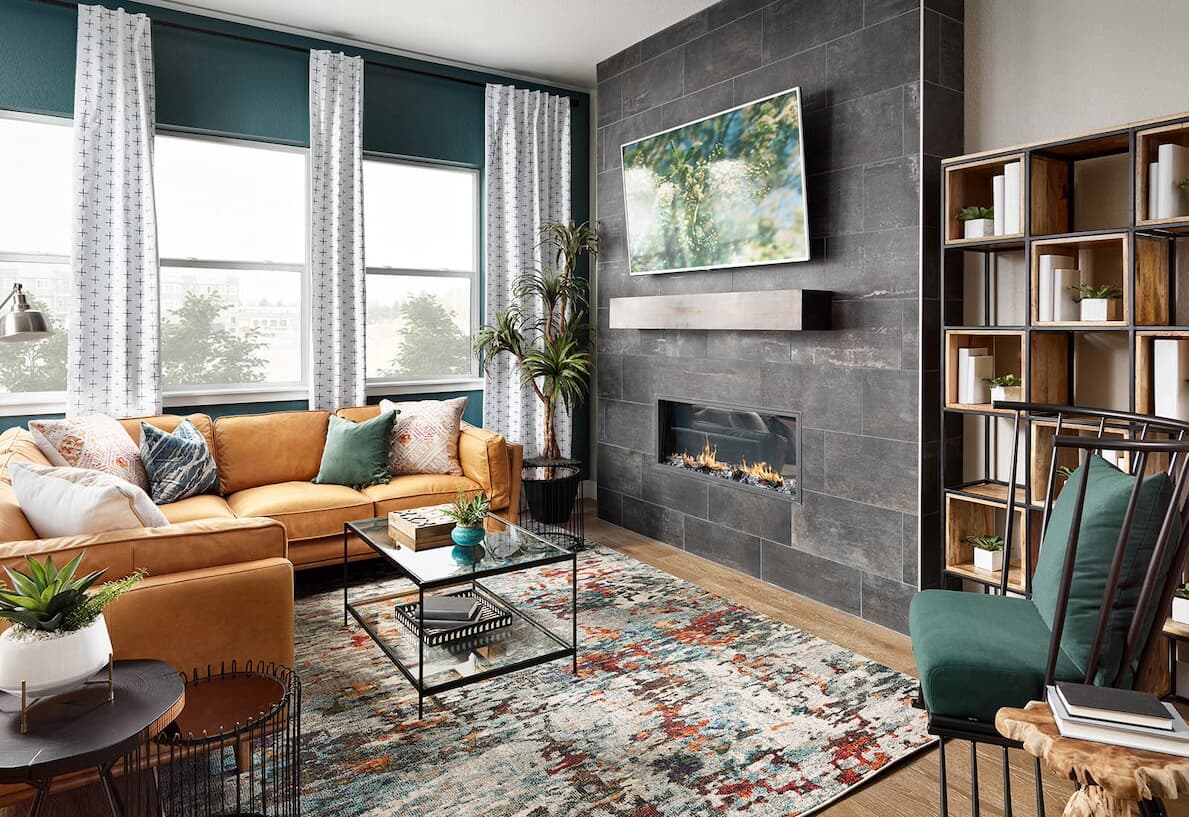Limited time savings on select homes. Explore Promotions now!
What Is the Difference Between Porcelain and Ceramic Tile

Debating whether to put porcelain or ceramic tile in your home and what the best uses are for each? Both types of tile are popular for use on walls, floors, countertops and on some furniture, such as tabletops.
In warmer climates, tile is also commonly used outside on patio surfaces and around pools. However, ceramic and porcelain tile feature different properties that can make one better suited for certain applications. While they look the same, the main difference between ceramic and porcelain tile is the process used to manufacture them.
Made mostly of clay and a mixture of minerals, ceramic tile is fired at a relatively low temperature compared to its counterpart, porcelain. It also tends to more easily absorb liquids. The amount of absorption can widely vary between styles and manufacturers.
“Ceramic is something you may not want to put in areas where you'll have water sitting on it a lot,” says Rebecca Hotchkiss. She is an interior designer with Brookfield Residential.
Ceramic tile may also be somewhat less durable and dense than porcelain tile. However, many people select ceramic due to its cost, which is typically less.
What is porcelain tile?
Porcelain tile is primarily made of clay along with feldspar — a relatively strong mineral found in granite — and sand. The latter two ingredients combine to help strengthen porcelain tile and make it somewhat more stain resistant than ceramic tile.
“Porcelain is more durable and dense and less porous than ceramic tile, although both materials are quite durable,” Rebecca says.How are porcelain and ceramic tile alike?
Porcelain and ceramic tile look alike to the untrained eye. Both are primarily made from clay and are manufactured in similar patterns and styles that typically mimic natural stone, wood, marble or other elements.
The finishes may also look similar, whether they’re shiny, smooth or textured. Ceramic and porcelain tile are long-lasting, durable choices for inside the home.Is one tile type better for certain rooms and applications?“If you have water sitting on the shower floor, something like that, you may not want to use something like a ceramic,” she advises. “Again, you may want to stick more to the porcelain on shower floors just because of its nonporous aspect.”
As for using tiles on walls, such as in the kitchen or bath, “both types of tile are right for either use. You don’t get nearly as much wear and tear on walls as you do on the floor, so you can use a tile that’s polished,” she says.
So, which is better: Porcelain or ceramic tile?
In deciding which tile type is better to use, consider where and how you plan to use it and whether it’s going to be installed inside or outside your home. Your budget may also be a factor in your decision because ceramic tile is often priced less than porcelain tile. Either type is available in a variety of colors and styles.
Outdoor use
Porcelain tile tends to be less subject to contracting and expanding after it’s laid than ceramic tile. Partly due to ceramic tile’s porosity and because it has less resilience against extreme weather changes, “you would not want to put it outdoors,” says Rebecca.
“With porcelain tile, you don't have to worry about outdoor freezing temperatures, that kind of thing.”
Cleaning and maintenance
Ceramic and porcelain tile are low maintenance options for use inside the home. “We recommend either for kids, pets, that kind of thing, all over the home,” Rebecca says.
Both porcelain and ceramic tile that have glazed top coatings, which most do, require similar care and cleaning. Sweep the surface and grout clean and then use a wet mop to remove dried-on debris.
“As for keeping the tile clean, they're both pretty much the same. It really just depends on the finish the tile has,” she says.
Tiles with a highly polished finish can be “a little bit more finicky,” in terms of showing fingerprints and footprints and dried-on stains, she says. Matte or unsmooth finishes tend to show less of these annoyances, she says.
Is it easier to scratch one type over the other?
“I think some of it does boil down to the finish that you have, so I mean, you would see a scratch a lot more on this sort of polished finish than you would on a matte finish,” says Rebecca.
“It's not that it's scratching easier, it's just that you might notice scratches a little bit more.”
Do the tiles need sealing?
You don’t need to reseal the tile on either type, however, resealing the grout joints between tiles may require resealing. Cracking“You wouldn't really want to drop something big on either type of tile because it is tile,” says Rebecca. “But because porcelain has a little bit more durability and rigidity, I would say that you'd be a little better off with it if you want to prevent scratching and that kind of thing.”
The final decision for which type of tile to use, Rebecca says, “largely boils down to how much you want to spend for a specific area. Both will look beautiful at the end of the day.”
Your turn
The choice between ceramic and porcelain tile ultimately comes down to personal preference and where you hope to use that tile. Porcelain tile is great for areas with a lot of water or moisture like a bathroom or backsplash while ceramic tile costs less and is more readily available. For more decorating and homebuying tips, check out our blog for helpful topics like our favorite kitchen decor ideas and tips for how to organize your laundry room.
For more information or questions about Brookfield homes, take a look at the areas we build homes or contact us directly.
